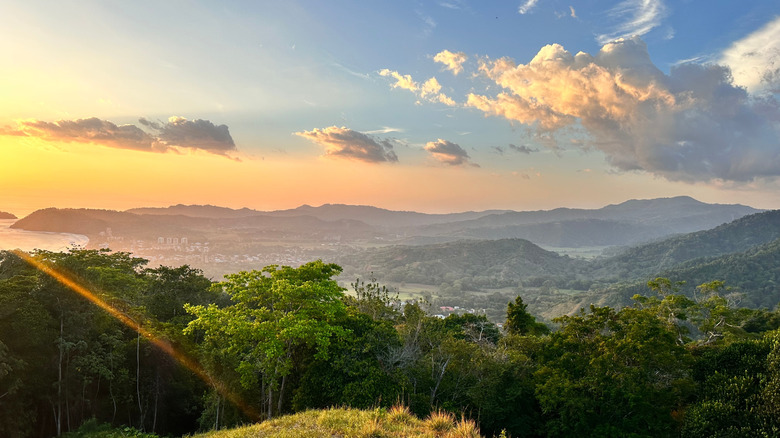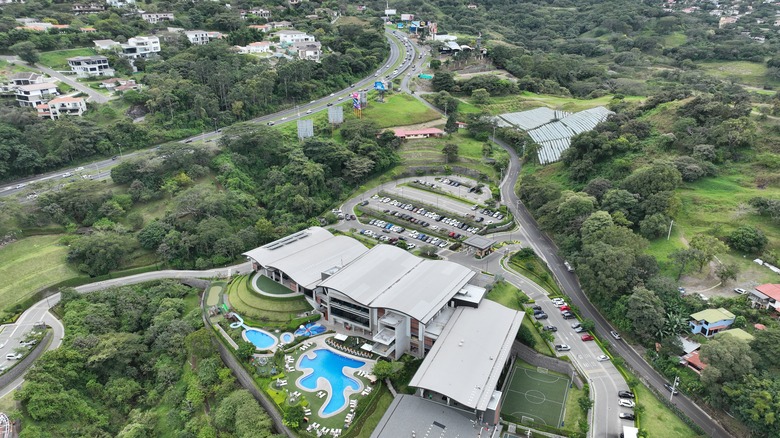One Of The Best Places To Retire Outside The US Is A Tropical Destination In Central America
America's housing crunch has set the stage for many retirees to turn their attention abroad. According to the National Association of Realtors, the median sales price of a home in the United States reached $422,400 in July 2025. But the median household income was only $83,730 in 2024, according to the U.S. Census Bureau. That means homes cost five times what typical American families earn annually — the very top of the range that financial experts consider affordable. Meanwhile, America's over-65 population grew by 3.1% from 2023 to 2024, while the under-18 population shrank by 0.2%, per the Census Bureau. It's clear that pressure on housing and social systems is building, so many retirees are opting to move to places outside the U.S., often focusing on tropical destinations in Central America.
Costa Rica has earned a reputation as one of the best countries to retire abroad, where retirement savings go far because of low living costs. Santa Ana, in the Central Valley, stands out as a particularly accessible retirement haven for Americans. It's less than 10 miles from San José, the capital. The weather stays mild all year, without wild seasonal swings. Retirees can expect pleasant temperatures nearly every day.
The real cost of retiring in Santa Ana
Santa Ana has drawn attention for its everyday affordability, especially for Americans worried about running out of retirement funds as U.S. living costs rise. The average cost of living in Costa Rica, according to International Citizens Group, is about 37% lower than in the United States. Homebuyers in Santa Ana see real value. The Latin Investor reported that in September 2025, median home prices ranged from $765,000 to $895,000 for single-family homes. Condos and townhouses went for $310,000 to $798,000. This is on the high end for Costa Rica, but still much cheaper than many retirement destinations in the States. By contrast, AreaVibes reported Naples, Florida, a popular U.S. retirement destination, had a median home price of $1,018,000 — well above Santa Ana's range.
Savings go beyond just real estate. Unbiased found monthly utility bills averaging $80 in Costa Rica versus around $200 in the U.S. Weekly groceries cost $57 in Costa Rica compared to $63 stateside. Healthcare stands out, too. Residency fees set steady monthly Caja healthcare premiums. That's a critical hedge at a time when this major retirement expense can devastate even well-planned budgets. According to Costa Rica Immigration Experts, retirees pay between 7% and 11% of declared income each month for Caja coverage. This covers preventive care, hospital stays, surgeries, and medications. Private doctor visits run $50 to $100 for general practitioners and $80 to $150 for specialists.
The lifestyle that makes retiring in Santa Ana easy
Santa Ana makes it simple for retirees to stay close to nature and community. Costa Rica's coastal access rules keep every shoreline open to the public — no private barriers or resort fees. Retirees can venture from Tamarindo to Manuel Antonio and not pay a cent to enjoy some of the world's most stunning tropical coastlines. This natural accessibility supports the active retirement lifestyle that leads to retirement success over the long term. Retirees can also explore areas with forest trails, like Cerros de Escazú Protected Zone and Alberto Manuel Brenes Biological Reserve. Panoramic viewpoints and quiet spots are perfect for walking or mountain biking.
Santa Ana's parks and recreational centers keep you moving, and they cost nothing. There are more than 50 of them, from Fisher Park to Jerome Recreation Center, with hiking trails, playgrounds, soccer fields, and basketball courts. Both the Santa Ana Senior Center in Birch Park and the Southwest Senior Center in Jerome Park offer free weekly activities, such as tai chi, chair yoga, arts and crafts, and bingo, alongside free round-trip transportation and wellness programs for older adults ages 55 and up. This allows for structured, no-cost social time, which is essential for frugal living without sacrificing life's pleasures.


